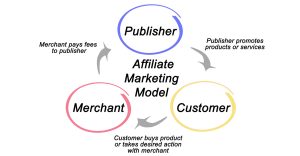
Share
Affiliate Marketing Metrics That Matter: A Data-Driven Approach
The affiliate channel is a powerful engine for scalable growth, yet its true value is often obscured by an obsession with surface-level numbers. In the modern, highly competitive performance marketing landscape, simply tracking clicks or total conversions falls short. These vanity metrics fail to capture financial health, partner quality, or long-term customer value.
To transform the affiliate channel into a predictable and profitable growth machine, brands must adopt a data-driven framework focused on key affiliate marketing metrics that matter. The difference between tracking volume and tracking value determines whether a program merely exists or actively thrives.
At our affiliate marketing agency, Advertise Purple, we leverage proprietary technology and data science to strip away guesswork and drive outcomes for our clients. The result is a more measurable, more optimized affiliate program aligned with strategic goals. This guide breaks down the key pillars of measurement to help you build a program that delivers verifiable, sustainable returns.
What Are Affiliate Marketing Metrics?
Affiliate marketing metrics serve as measurable indicators of how effectively your affiliate program operates, from partner recruitment to conversion and beyond. These figures span across traffic, engagement, conversion, revenue, and retention.
In the context of affiliate marketing tracking, these metrics become the living dashboard guiding decision-making. They empower a brand or affiliate marketing management agency to identify which campaigns succeed, which affiliates generate long-term value, and where optimization is required. Without a consistent focus on the right metrics, you risk promoting the wrong performance signals and missing growth opportunities.
Conversion Rate
Conversion rate is the percentage of visitors driven by affiliates who complete a desired outcome, often a purchase, sign-up, or lead. It’s one of the most telling affiliate marketing metrics because it highlights both traffic quality and partner effectiveness. A high conversion rate indicates strong audience alignment and effective creative, while a low rate often signals misalignment or poor funnel experience.
This metric is one of the most widely used to evaluate affiliate programs. To put conversion rate into action, segment your affiliates by traffic source, promotion type, and offer. Then benchmark each affiliate’s conversion rate, optimize low-performers, and double down on those converting well.
Average Order Value (AOV)
Average Order Value (AOV) reveals how much each customer spends on average when driven through your affiliate program. While many teams obsess over volume, AOV focuses on revenue quality: those high-value customers who boost overall profitability.
If an affiliate brings many small orders, your revenue might look healthy but margins may suffer. Tracking AOV alongside conversion rate provides a clearer picture of which affiliates drive sustainable value.
As one industry guide highlights, AOV must be monitored to gauge profitability and keep the business healthy. A rising AOV means you might adjust commission tiers to reward such affiliates accordingly.
Return on Ad Spend (ROAS)
ROAS measures how much revenue you generate for every dollar spent on affiliate commissions and program costs. It’s an important affiliate marketing KPI, acting as a profitability gauge across affiliates and channels.
If an affiliate drives strong volume but the cost of acquiring those customers is high, ROAS will highlight the inefficiency. Using technology that indexes promotional methods and predicts outcomes, an experienced affiliate marketing management agency can forecast ROAS across segments, helping in budget reallocation and investment prioritization. The goal is a ROAS above 1:1 (i.e., generating more revenue than cost), but ideally much higher once lifetime value is considered.
Customer Lifetime Value (CLV)
While immediate conversions matter, customer lifetime value (CLV) focuses on the long haul: how much a customer, acquired via an affiliate, will be worth over time. By combining CLV with acquisition cost, you can identify affiliates who consistently deliver the highest long-term value.
This is one of the deeper affiliate marketing metrics that separates transactional programmes from those built for enduring growth. Research emphasizes how CLV provides insight into sustainable customer acquisition beyond one-off deals. When you know CLV, you can refine commission structures, reward affiliates driving quality over quantity, and align incentives for longevity.
Click-Through Rate (CTR)
Click-through rate (CTR) measures the percentage of impressions (or links shown) that result in clicks. While not as directly tied to revenue as conversion rate, CTR signals how compelling your affiliate creative, placements, and offers are.
A strong CTR means the audience is engaged; a weak one suggests your affiliate offers or creatives may need revision. Using A/B testing on affiliate creative and optimizing placement helps increase CTR, which in turn enhances downstream metrics like conversion rate and AOV.
Fraud Prevention Metrics
In an affiliate program, fraud can undermine your results and distort your data. Metrics such as void rate (cancellations/returns), low-conversion traffic spikes, mismatched geographic patterns, and unusually high click volumes need monitoring.
A robust affiliate marketing tracking system will flag and eliminate suspicious activity, ensuring transparency and protecting your ROI. Industry experts emphasize the need to avoid “vanity metrics” and instead focus on those that reflect real, sustainable value. At our affiliate marketing agency, we build in monitoring of affiliate behaviors, anomalous clicks, and incremental revenue to maintain program integrity and partner trust.
Moving Beyond Vanity to Data-Driven Optimization
The early days of digital marketing prioritized sheer volume. Generating a high number of clicks or a large database of impressions was often seen as a badge of honor.
Today, this mindset is outdated. While affiliates are tasked with driving traffic, the ultimate business goal is not activity; it is profitable revenue.
Many programs still fixate on superficial measurements that do not accurately reflect true profit or the enduring quality of a partnership. This gap between activity and profitability is where resources are wasted and growth stalls.
Success in modern affiliate marketing is found by adopting a data-driven framework centered on Key Performance Indicators (KPIs) that deeply measure efficiency, partner quality, and the long-term customer value they introduce. The right affiliate marketing KPIs move the conversation away from how much traffic an affiliate sends and toward how much profitable value they deliver.
Collecting and monitoring metrics is only half the battle. True growth comes from using those insights to optimize. A modern affiliate marketing management agency leverages technology that indexes promotional methods and applies machine learning to predict which affiliate relationships will deliver the best outcomes.
For example, by scanning over 100 classifications of promotion types, we identify high-performing affiliates across verticals and geographies, and reallocate budget accordingly. With this kind of data intelligence, you can uncover latent growth opportunities, reduce risk, and prioritize investment into partners who generate measurable value.
Building Trust Through Transparent Reporting
Brands want clear visibility into how their affiliate program runs: which publishers are recruited, how optimizations are executed, and what results are delivered. A best-in-class affiliate marketing agency provides dashboards offering full transparency into recruitment and optimization strategy.
This enables clients to view and analyze multiple optimizations per affiliate and dismiss the question “What have you done for me today?” The result is stronger client-agency trust, longer tenure, and better outcomes. In fact, we’ve seen improved client satisfaction and longer relationships as this transparent approach becomes a differentiator.
Elevating Affiliate Marketing with Smart Metrics
Focusing on the right affiliate marketing metrics is the key to building a high-performing, sustainable affiliate channel. All of the above metrics play a distinct role in painting a complete performance picture.
When you combine strong data-driven insights with transparent optimization and proactive partner management, you shift your program from reactive to strategic. That’s where growth happens, through smarter clicks, better conversions, and higher-value customers.
We are here to help you transform the affiliate channel from a simple commission structure into a scalable, predictable, and highly profitable engine that delivers sustainable growth. Our affiliate marketing content strategy strengthens brand visibility and engagement, helping partners attract higher-quality traffic and convert more effectively.
We combine advanced technology with expert affiliate marketing management to identify top-performing partners, optimize campaigns, and drive measurable ROI. Our self-service affiliate marketing option empowers brands that prefer hands-on control to access data insights, track performance, and scale efficiently.
Contact us to schedule a consultation and discover how our advanced technology and strategic approach can elevate your results.





